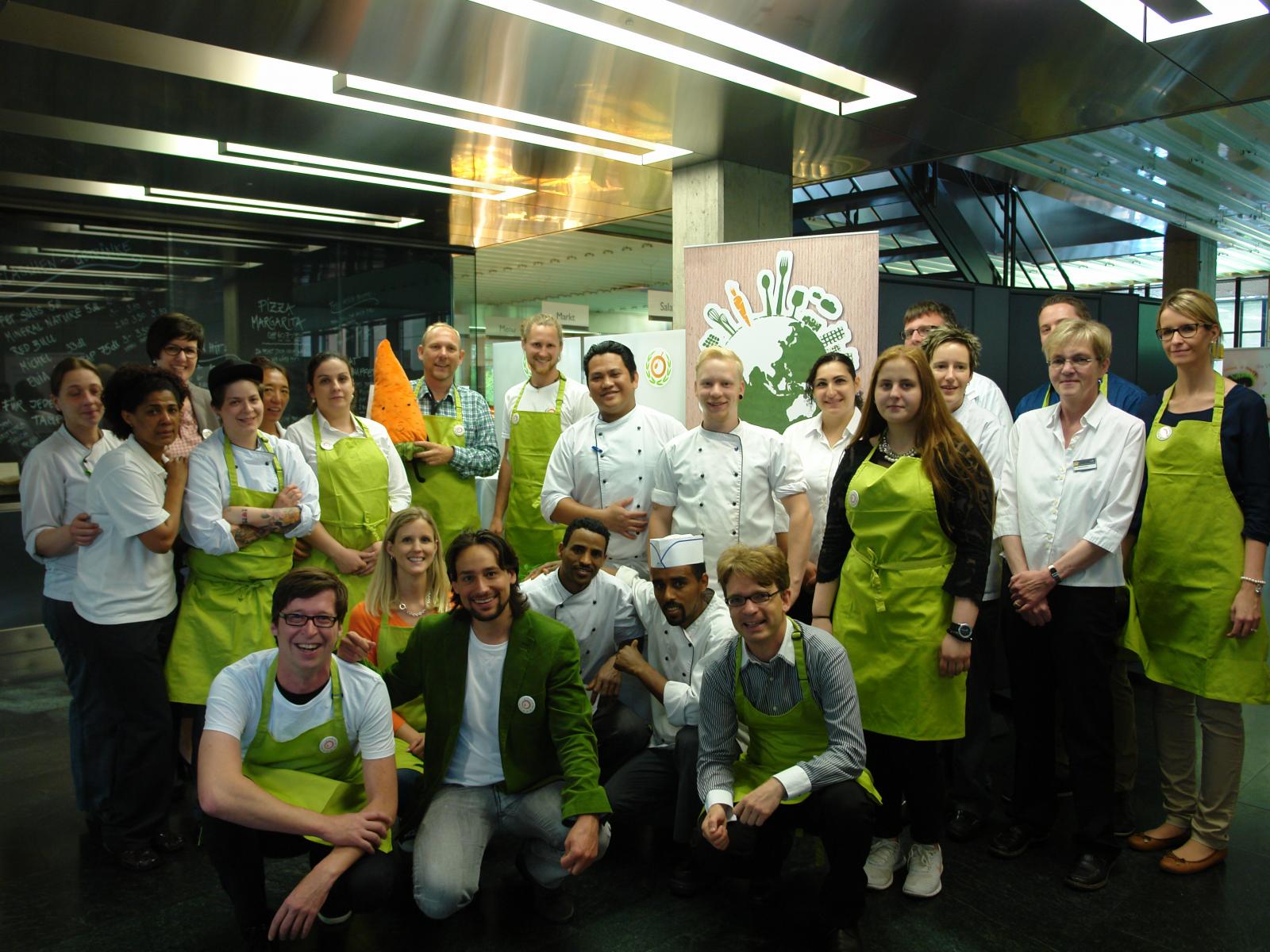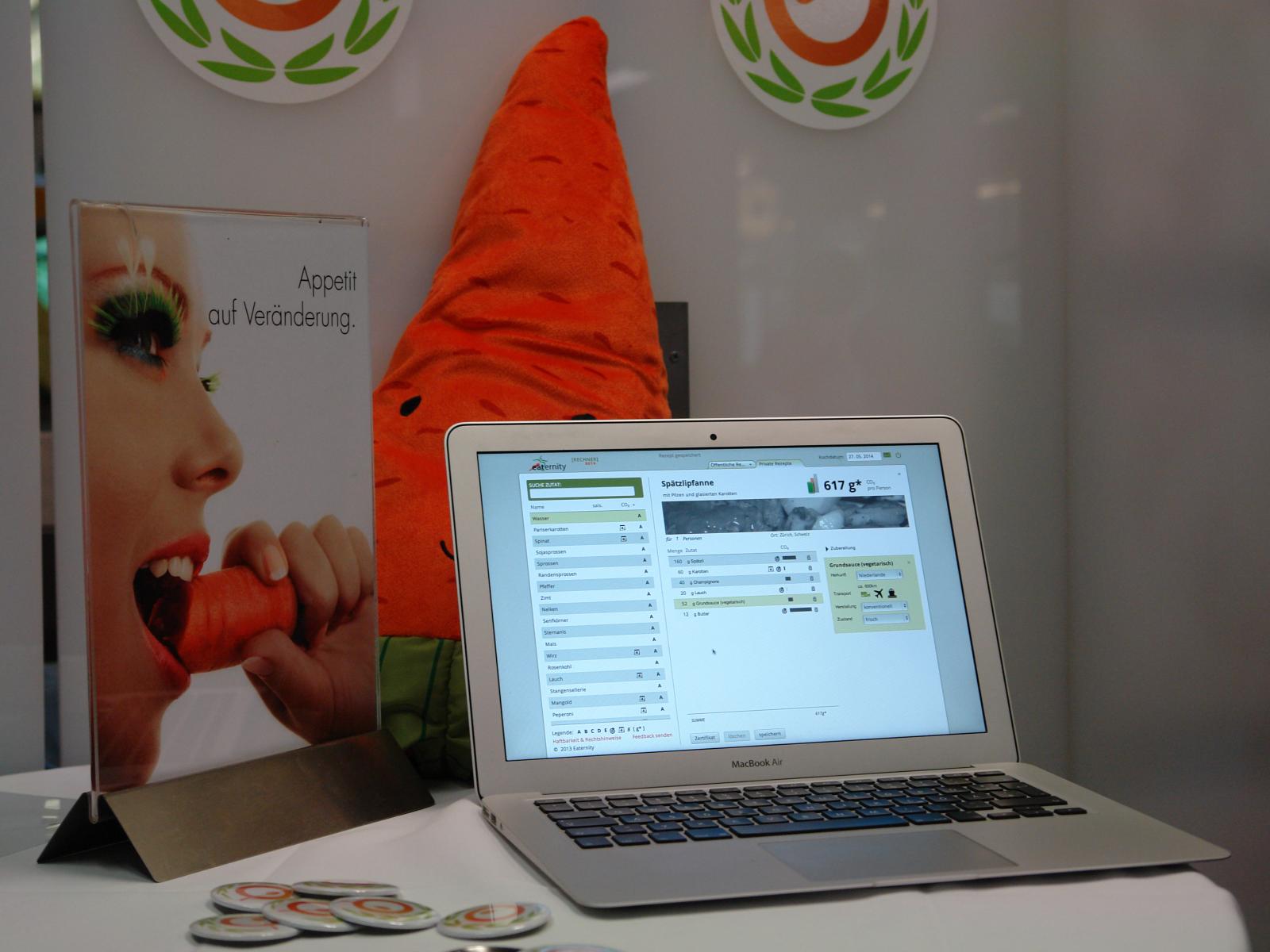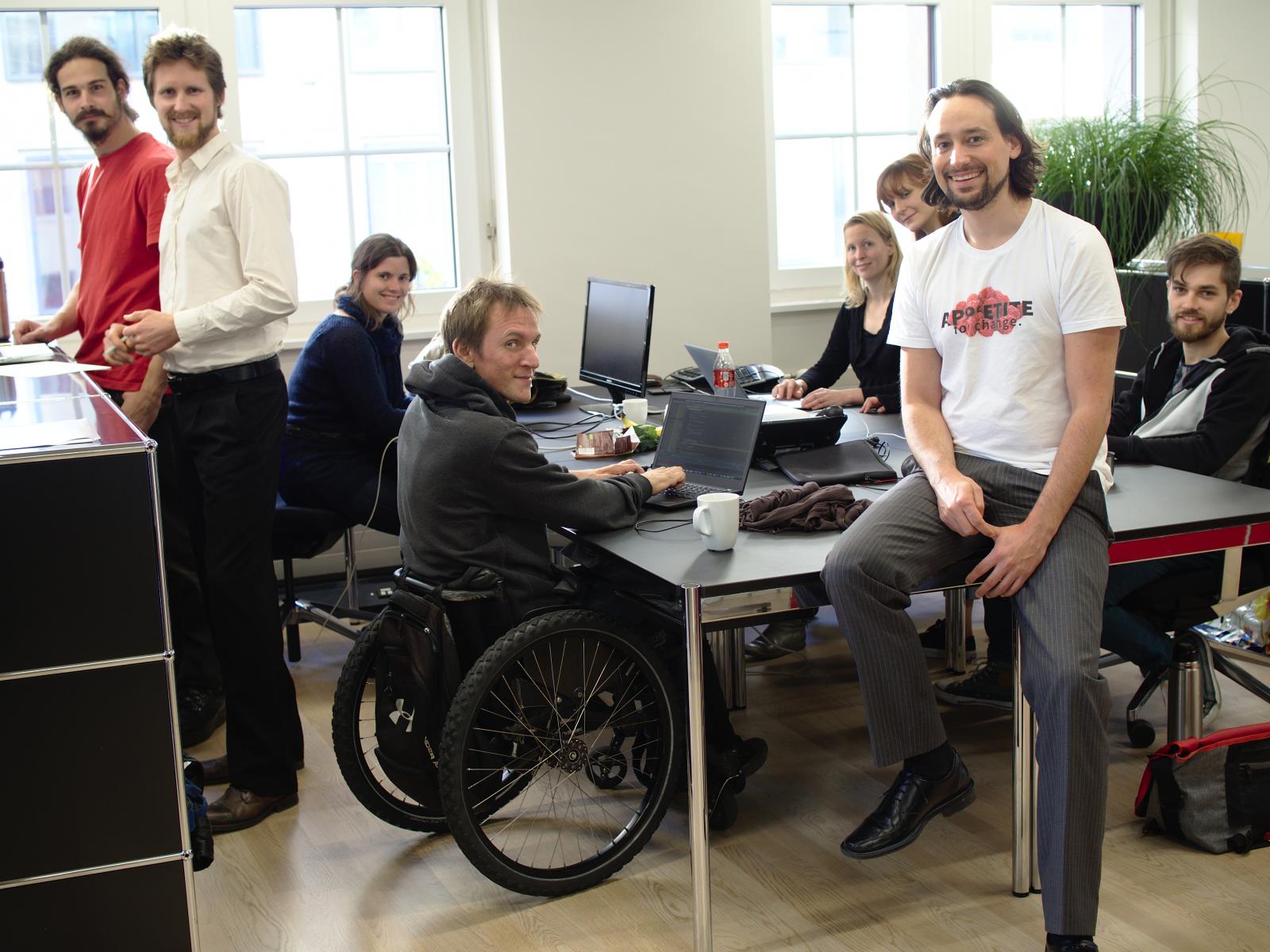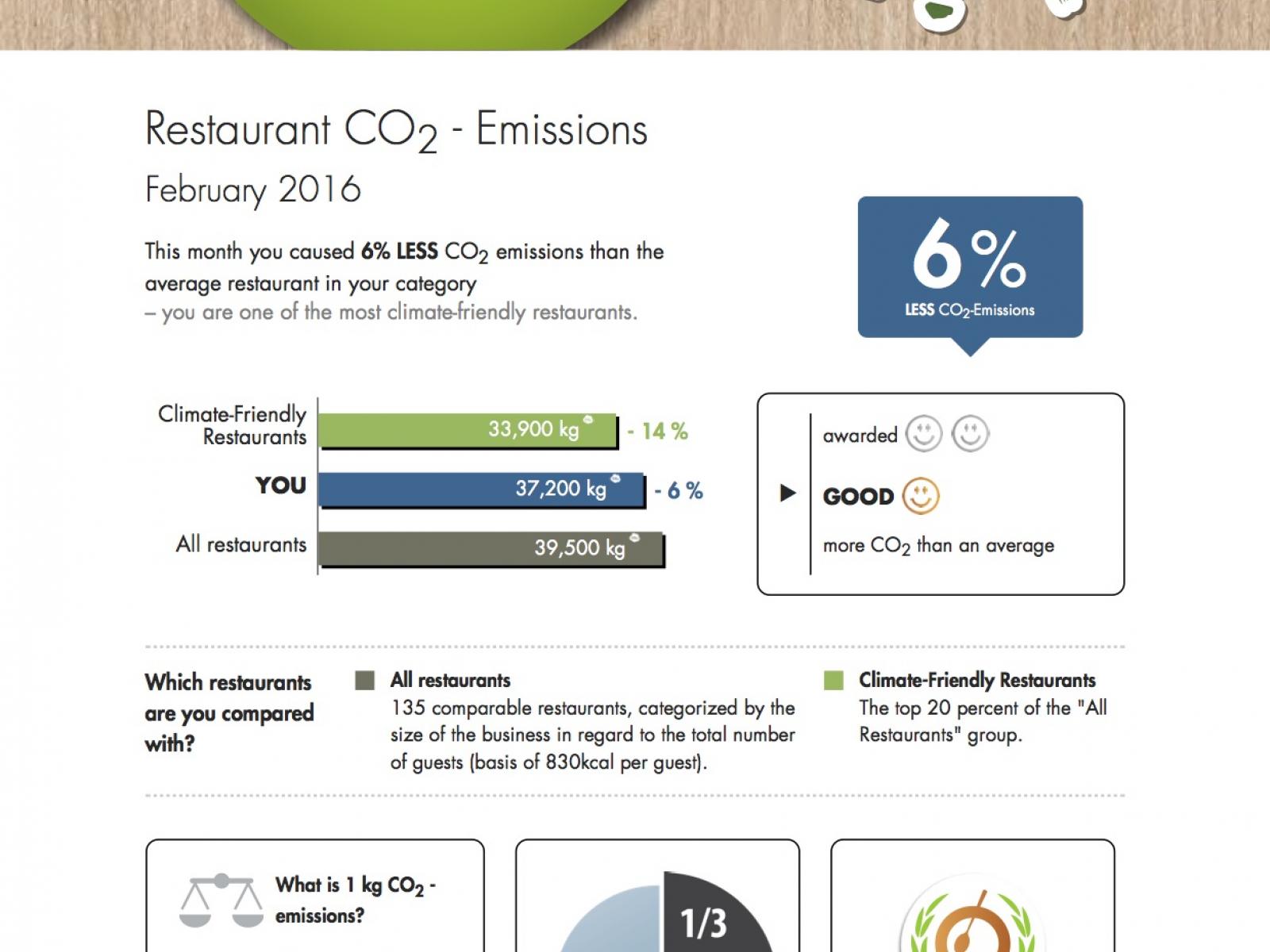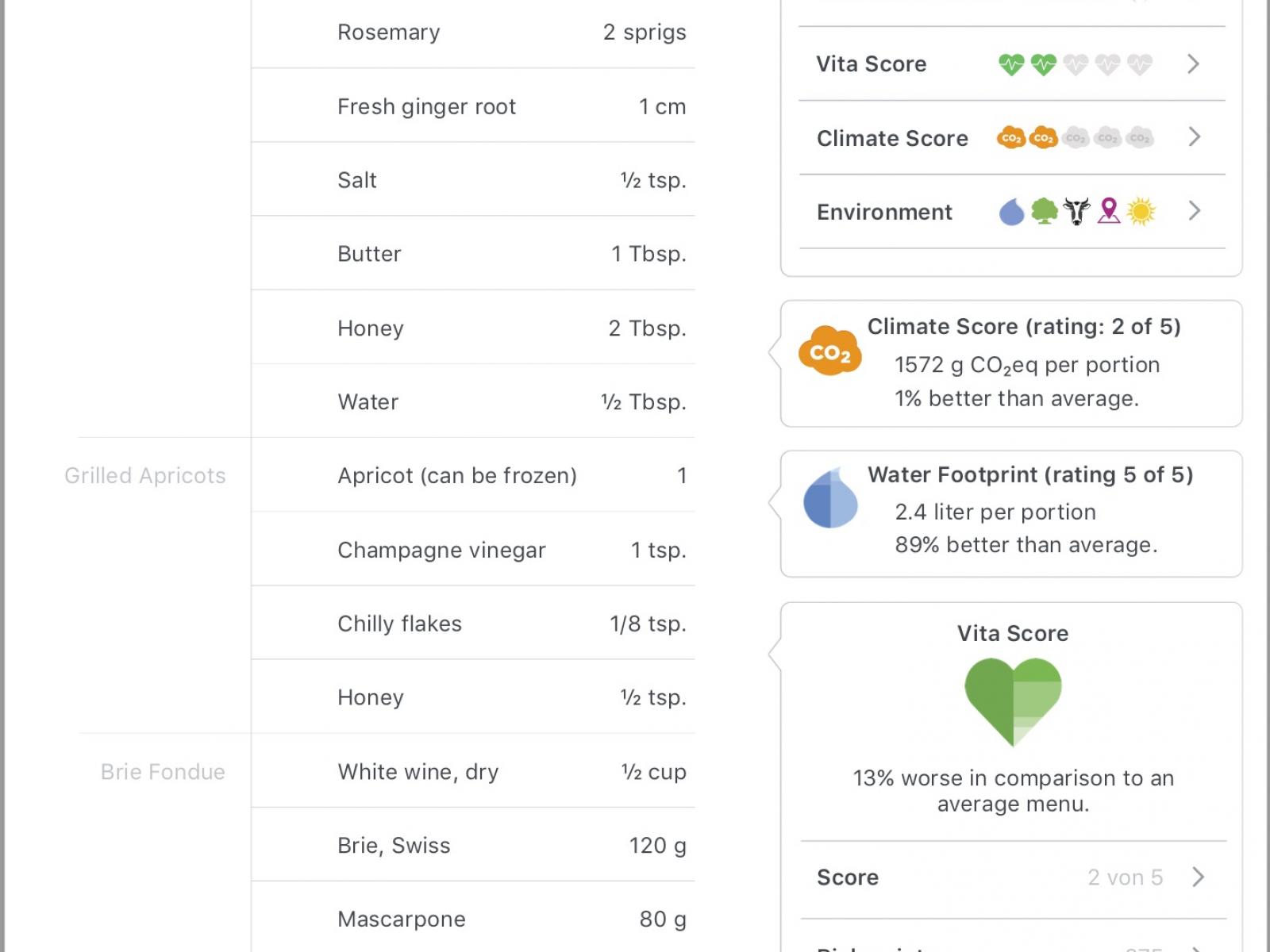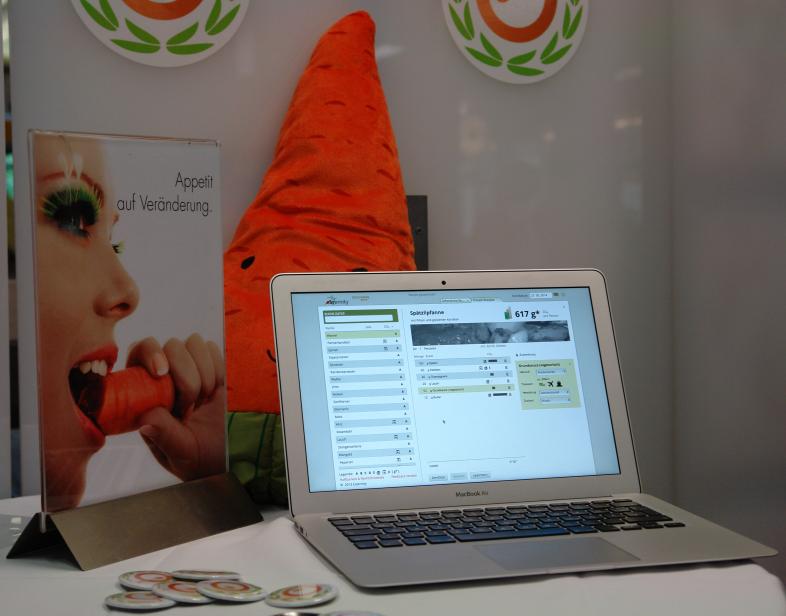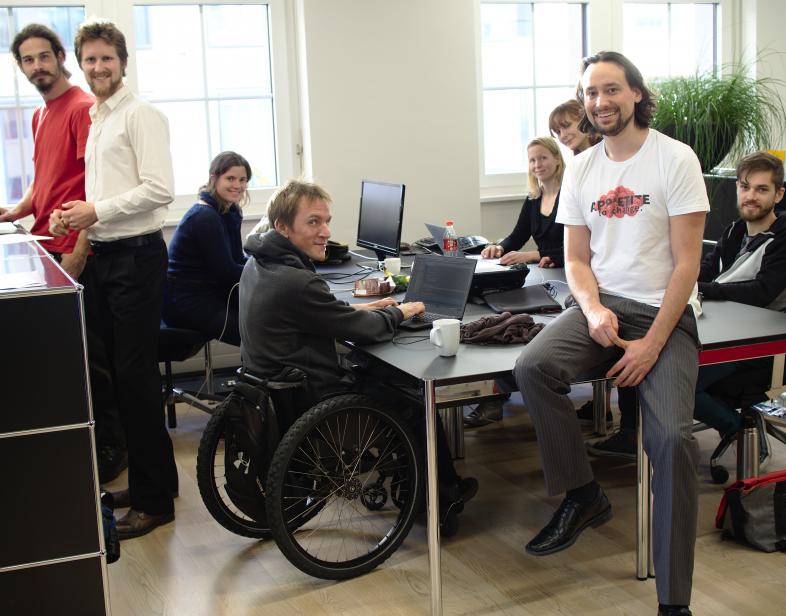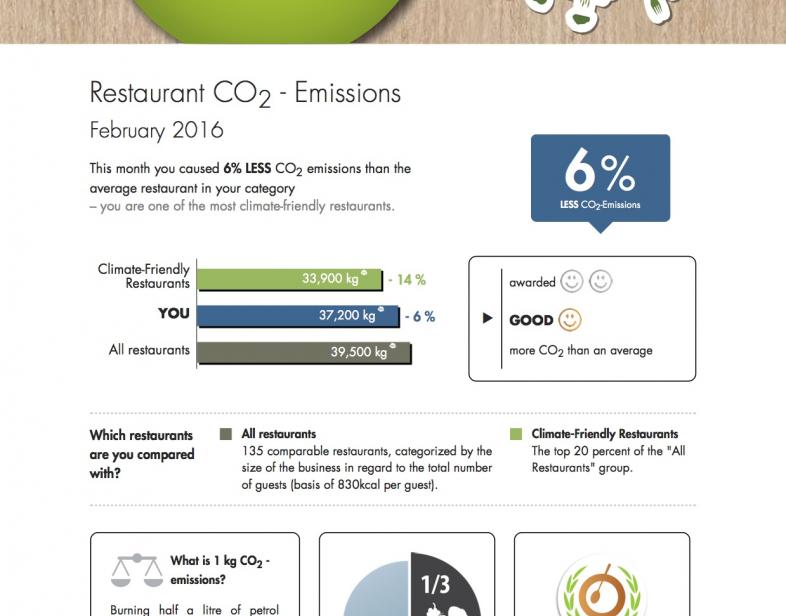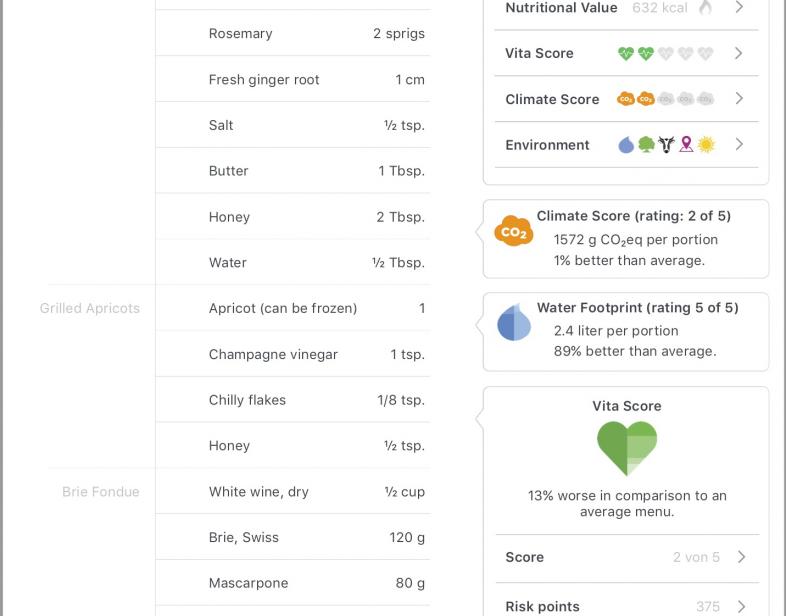An Overview Of Our Solution
Our food choices are responsible for ⅓ of man-made greenhouse gas emissions. We have the potential to reduce food related emissions by at least 50% through smart diet choices.
Eaternity has a big appetite for change: We establish climate friendly meals in society. Eaternity has developed an innovative software, with it restaurants can track and measure the CO₂ emissions, water scarcity footprint, health score, animal welfare and deforestation of all their meals and purchases automatically and daily. Already over a hundred restaurants participate in the measurements and the projects.
In a recent project we have just proven that an average employee restaurant can reduce emissions by more than 19%, while at the same time increasing guest satisfaction.
We want to enable everyone to contribute individually to the worlds sustainability goals.
- Population Impacted: 999.999 or about a 1000 people per restaurant
- Continent: Europe
Context Analysis
In a country such as Switzerland, eating three climate-friendly meals per week can reduce one million tons of CO₂ every year.
Overall a climate friendly diet would account for less than one ton of CO₂ per person. Food is the most efficient way to reduce greenhouse gas emissions and reach the goal of maximum global warming of 2 degrees, set by the Paris Climate Accord. As well as our Sustainable Development Goals.
By working together with restaurants, we enable their chefs to optimize meals in a way that fits their guest profile. Increasing satisfaction by making healthy, sustainable and delicious meals, while also reducing CO₂ emissions significantly. A web application enables them to manage recipes and menus easily, to also improve profits and save time for the food they serve.
Special partnerships with bigger catering service, enable our solution to be rolled out quickly to potentially thousands of restaurants in the coming years.
Describe the technical solution you wanted the target audience to adopt
We have developed innovative software for private and professional use. It is based on an easy to understand and yearly reviewed LCA-database. This is currently the largest and most comprehensive database for carrying out environmental calculations for menus.
Since 2009 we built a solid, comprehensive and peer-reviewed CO₂-database on food items. It forms the firm backbone of all the calculations carried out by Eaternity.
To calculate the carbon impact of food we use life cycle assessments (LCAs). The database is currently the largest and most comprehensive database for carrying out menu CO₂-calculations. It includes more than 550 core ingredients and additional parameters for organic or greenhouse production, processing, packaging and preservation.
Calculations done with the Eaternity include all emission of the complete supply chain.
With Eaternity, we offer everyone the opportunity to make a sustainable choice when selecting their everyday food.
Type of intervention
Describe your behavioral intervention
Educated food choices have the potential to reduce carbon emissions of the food supply chain by at least 50%. The world’s increasing population and the development of wealth combined lead to a rise in demand for food. With current trends proceeding the entire carbon budget of the world will be food related by 2050. Food therefore is at the core of meeting the goal of keeping global warming below 2 degrees.
Everyone understands that the world will not turn vegetarian entirely. There’s even a case to be made for animal protein raised on steep alpine hills not suitable for vegetable farming. However, the awareness for the substantial environmental cost of animal protein is important, so everyone can make their contribution with a healthy ratio between animal protein and plant protein.
In a recent study with 6 restaurants (http://www.eaternity.org/menu-plus/ ) we showed that change is attractive for all actors involved. An average employee restaurant can reduce emissions by more than 19%, while at the same time increasing guest satisfaction. Without further external support for the restaurant, beyond a simple workshop. The reduction was made possible in only two month of time and amounted to 10 tons of CO₂.
As needed, please explain the type of intervention in more detail
Restaurants were provided with the knowledge about reducing CO₂ in their menu composition, as well as they were provided with 50 different possible interventions of which they choose on average 15 that worked best for them.
These intervention included: hanging posters, printing a CO₂ label for the meals, having a competition between the restaurants, incentivizing guests to eat climatefriendly by offering them a small snack of the meal for free, etc.
Describe your implementation
To enable actual reductions we complement our accurate measurements of the environmental impact of foods with the means to understand and transfer the knowledge about the relevant decisions.
Through a workshop we provided educational material that could be permanently used to keep the staff informed. Also we provided a set of 50 ideas for interventions with the guests, to keep them motivated to help reduce CO₂ emissions.
Key success factors include two specific stepping stones:
The staff of the restaurants needs to be convinced and motivated to drive change. Specifically - if a decision maker is not convinced about climate change being real, this imposes a problem.
To enable accurate impact calculations and meaningful communication, we need to be provided with the recipes (ingredients and amounts). Given an electronic system for recipe planing, there is an initial setup to connect our system.
External connections
Our clients include companies like IKEA, Sodexo, Compass, the city of Zurich, etc. You can find a selection here: http://www.eaternity.org/app/clients
We engage with any stakeholder interested in providing transparency on food related environmental and health impacts. Our partners involve NGOs like WWF or Max Havelaar for marketing, Universities and scientific research bodies to improve data quality, other start-ups to help them bootstrap their idea and software businesses to connect our solution to theirs. You can find the a list of partner here: http://www.eaternity.org/about/partners
We had success participating in workshops and sessions with politicians to provide them with the information on the issue, as well as the solution. Opening doors for future policies that include CO₂ targets for restaurants. Together with a few municipalities, we are currently developing guidelines on how to implement them.
Who adopted the desired behaviors and to what degree?
We currently provide impact measurements to 140 different restaurants. The desired behavior is taken up by the guests who visit those restaurants for choosing climatefriendly meal options. Yet from the statistics it is clear that most impact is not found by a conscious choice of the consumers, but in the combination with a skill chef, that serves a delicious climatefriendly meal and the more intuitive selection of those by the guests.
How did you impact natural resource use and greenhouse gas emissions?
We project that the average CO₂ reduction of the 140 restaurants is 20% in the coming two years. Amounting to around 1500 tons of saved CO₂ emissions every year from then on. By the knowledge transfer to consumers, as for example by providing CO₂ value on goods in retails market, or by providing climatefriendly recipes, we expect a multiplication of our works impact, to about a 1000 people per restaurants.
What were some of the resulting co-benefits?
Transition to a more sustainable food supply system is easy and it goes hand in hand with public health. To this day obesity, cardiovascular diseases, cancer and diabetes account for 70% of all deaths in Europe. Despite an over-supply of food we are suffering a high amount of disease. However, eating according to health recommendations will already reduce our climate impact by up to 35%.
Eaternity has also developed indicators for health, land-use change, good animal treatment, seasonality and the water footprint to help the food service industry with making smart choices. In combination with Eaternity’s Carbon Footprint tool we found promising synergies between these indicators. See here: http://www.eaternity.org/foodprint/
Sustainability
All efforts have bootstrapped with client money as well as grants from governments, NGOs and foundations. Currently 50% of our expenses can be covered from clients / sustainable revenue sources.
We do not have investors (beyond the founders) or any financial obligations to private organizations.
Return on investment
The initial setup for software and database development did cost about CHF 1.5 million. To bring these investment into perspective, one needs to see the possibility that as a Software as a Service business, our product can be scaled to millions of people, with rather modest resources needed.
How could we successfully replicate this solution elsewhere?
To replicate results it is still necessary to translate product, educational and marketing material into the specific language (other than english , german and french) of the country to apply it.
In general, to make our approach compatible with a new language we estimate about 3 month of time for one person.
Other than this, the solution can be used right away for any interested party. Given their interest and respective support from the community.
